The pace of COVID-19 vaccinations is quickly picking up, with the United States now averaging two million doses given per day. The Biden administration now says there will be enough doses to vaccinate every adult in the U.S. by the end of May.
As more and more people become eligible to be vaccinated, there are questions about just how safe and effective the vaccine is and how much of an impact it is having on transmission. What does the data show? Let’s take a look.
Impact in Israel: Sharp decline in hospitalizations and death
Israel is a good country to look at to see the impact of vaccination, as the country has already fully vaccinated more than 40% of its population (as of early March 2021). This includes more than 80% of its 60+ year-old population. The charts below, taken from the Our World in Data website, show the difference the vaccine has made in the country.
The first chart shows the percentage of adults in Israel who have received either one or two doses of the COVID-19 vaccine, broken down by age group. You can see that the majority of 60+ year-old people have had both vaccine doses, while the 16–59-year-old age group is catching up.
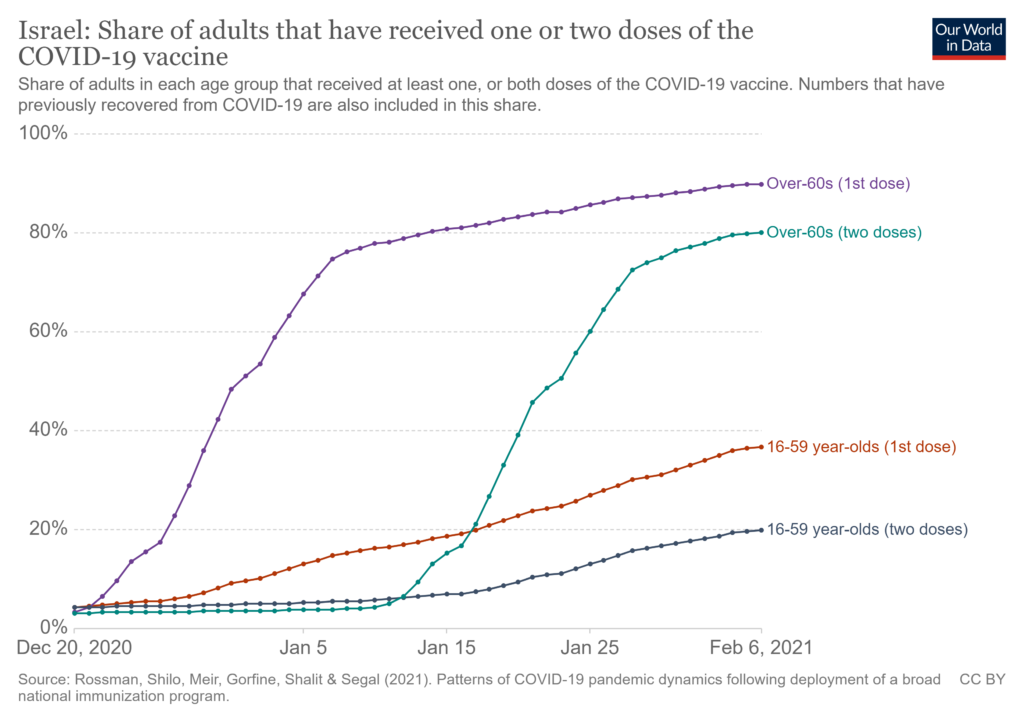
Israel started to vaccinate its citizens in mid-December 2020, with second doses starting to be administered in mid-January. The following chart shows that since mid-January, new hospitalizations for those age 60+ have plummeted, while new hospitalizations for those age 0-59 are starting to go down, albeit a few weeks behind the other age group.
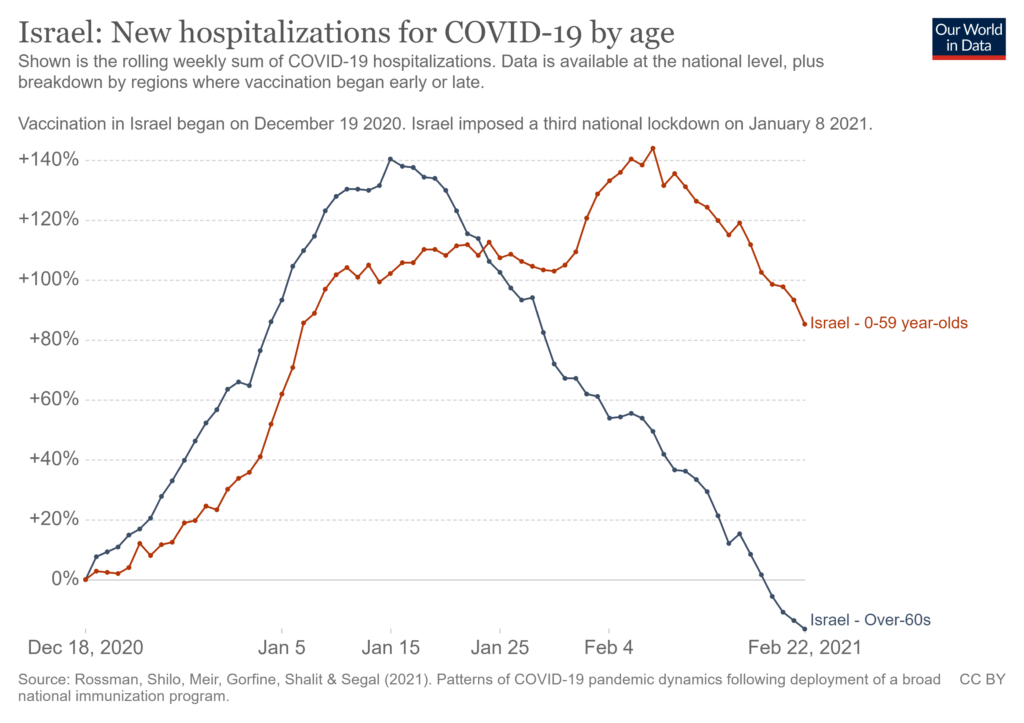
When we look at confirmed deaths from COVID-19, they have plummeted since mid-January, with the 7-day rolling average of daily deaths falling from a high of 64.9 in late January to 19.3 in early March.
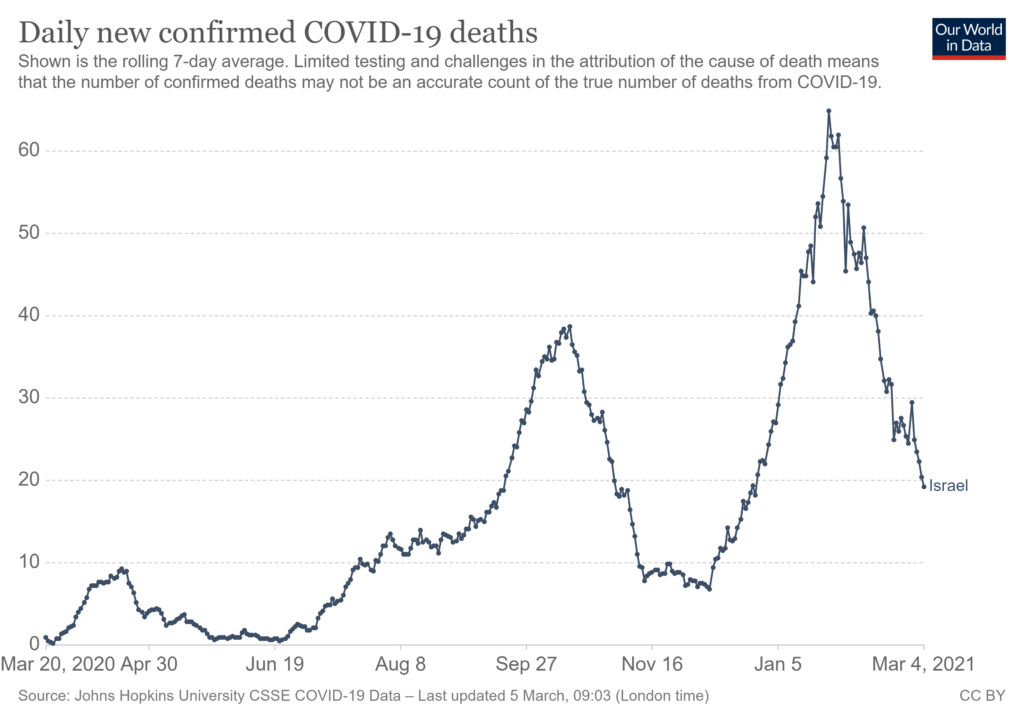
Nursing home deaths in the U.S.: More than 65% decrease from high
While the United States is not as far along as Israel is in vaccinations (in the U.S., 8.3% of the population has been fully vaccinated as of early March 2021), there is still compelling data to show the impact that vaccines have had on the population.
The New York Times published an article on deaths among U.S. nursing home residents. As shown in the chart below, since vaccinations began—which started primarily with healthcare workers and older Americans—nursing home deaths have plummeted, falling 65% from a high in December (through Feb. 7, 2021).
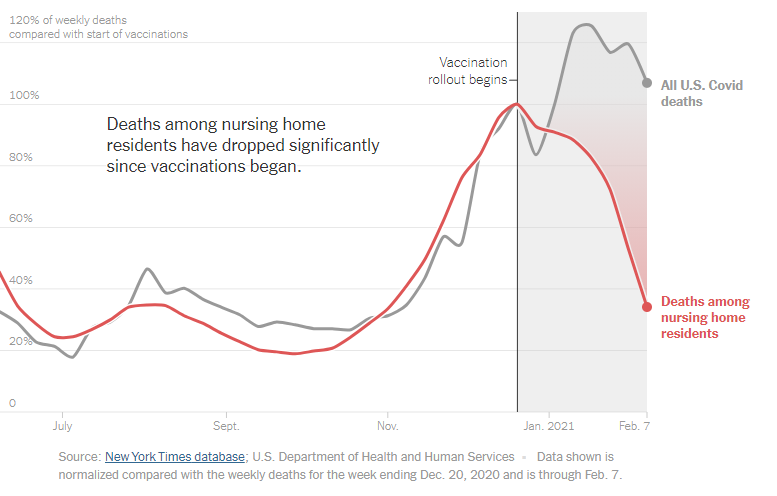
Safety: Stats show vaccine both safe and effective
Despite the promising statistics shown above, according to the KFF COVID-19 Vaccine Monitor, an ongoing research project that tracks people’s attitudes towards the COVID-19 vaccine, a significant portion of the American public (51%) is hesitant to be vaccinated.
- 13% say they will “definitely not get it”
- 7% say they will “get it only if required”
- 31% say they will “wait and see how it’s working”
One of the issues that is preventing people from wanting to get the vaccine is around potential side effects. But despite what many have heard, severe side effects from the COVID-19 vaccine are very rare. It’s more likely that people will have mild side effects, including injection-site pain, fatigue, headache, and muscle pain – side effects that are also common in the flu vaccine. Statistics reported in Nature Magazine detail the incidence of these milder symptoms.
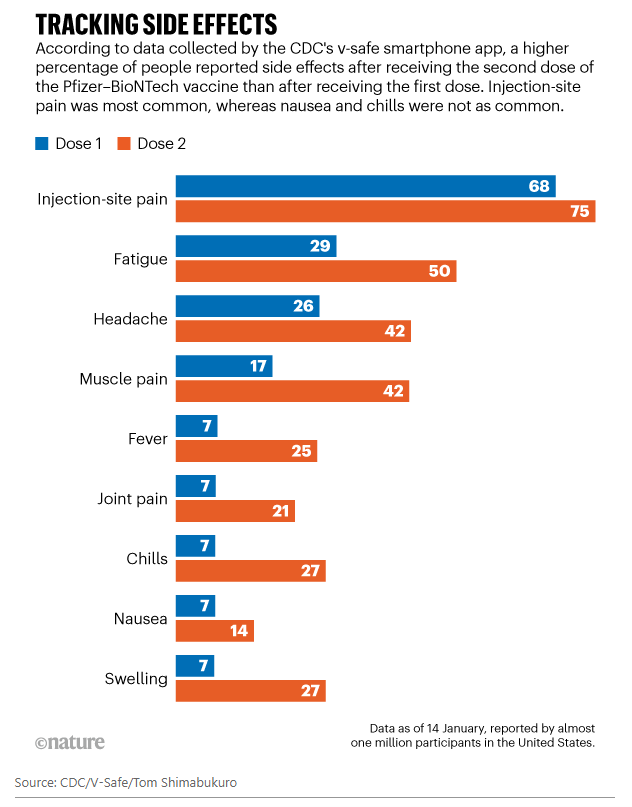
In terms of efficacy, the three vaccines approved for use in the U.S. are all highly effective at preventing severe incidence of COVID-19.
- The Pfizer vaccine showed 95% efficacy at preventing symptomatic COVID-19 infection after two doses.
- The Moderna vaccine showed 94.1% efficacy at preventing symptomatic COVID-19 after two doses.
- The Johnson & Johnson vaccine was 66% protective against moderate to severe COVID-19 infection, and was 85% protective against severe disease. Most importantly, it was 100% protective against hospitalizations or deaths among those in the trial study.
Conclusion
There is a lot of information – and misinformation – out there on COVID-19 vaccines and their impact on public health. Data can play an important role in separating fact from fiction. Statistics show the positive impact that vaccines are having in reducing hospitalizations and deaths from the disease around the world. The key now is for vaccine producers to increase supply and for the federal and state governments, as well as healthcare providers, to ensure that distribution is both swift and equitable.
- Solving Hospital CEOs’ Pressing Challenges With Analytics - April 15, 2024
- Navigating the Wellness Wave: Wine & Spirits Data Strategy - April 9, 2024
- Takeaways from HIMSS24 - March 26, 2024




